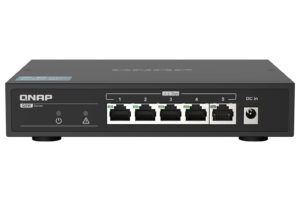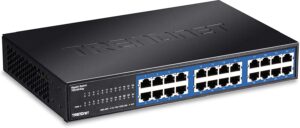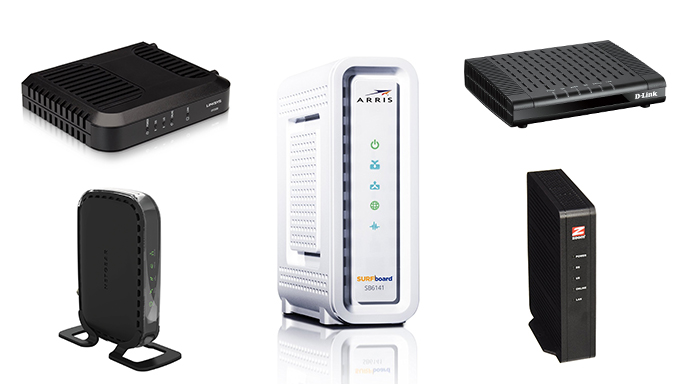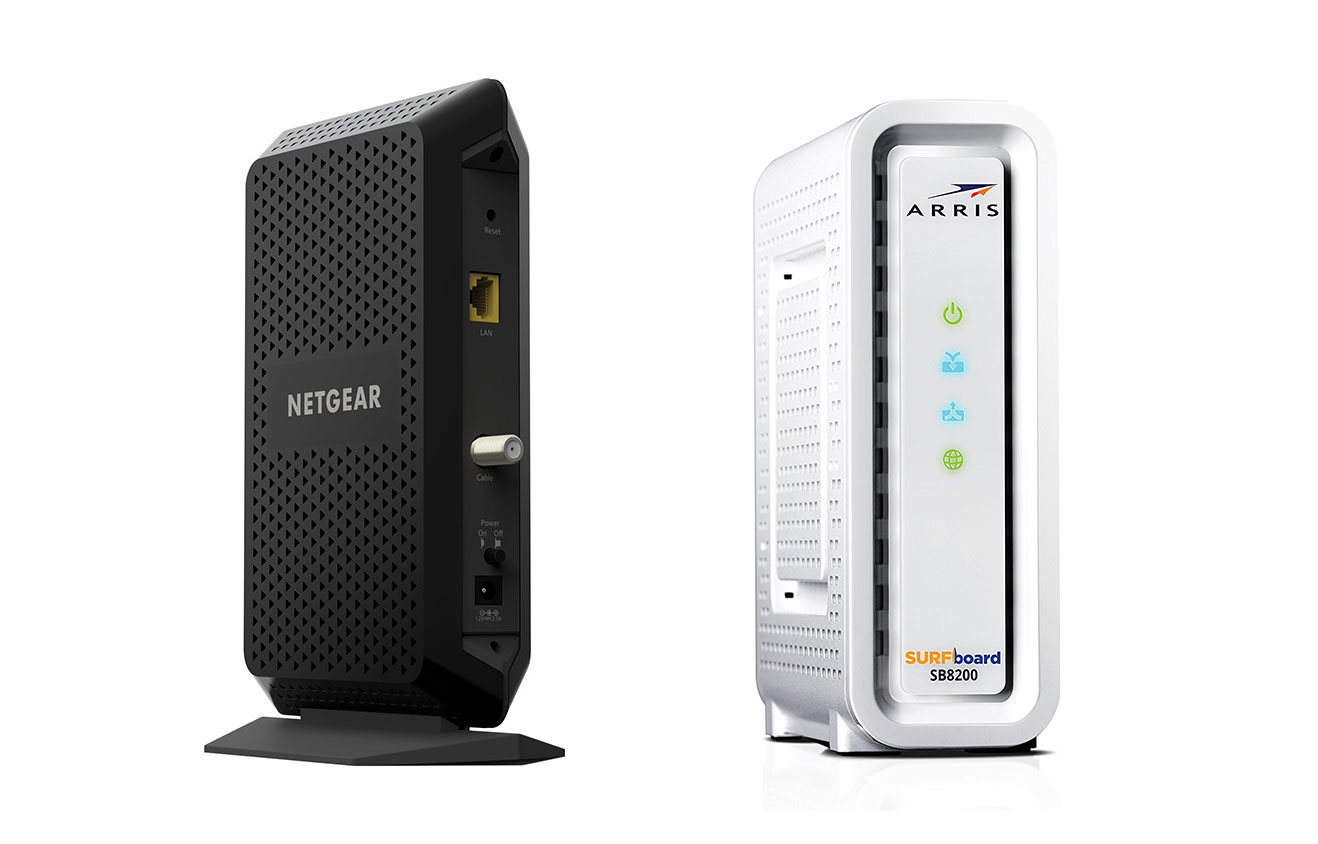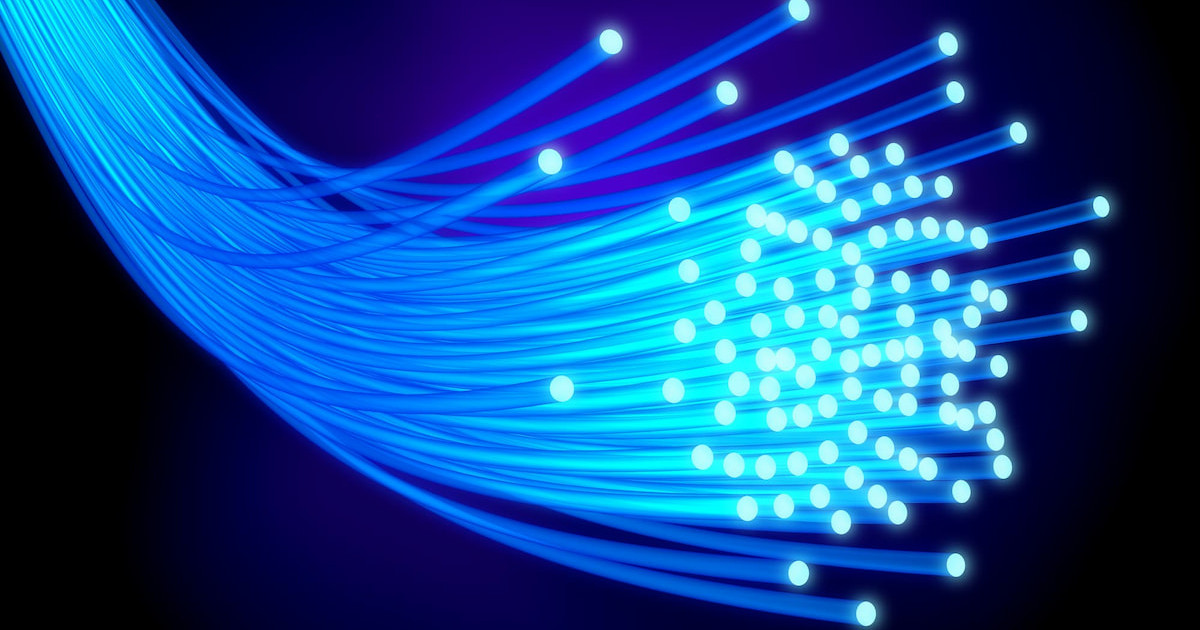Best High-Speed Network Switches 2025
Expand your wired network using one of our top picks packing loads of extra Ethernet connections
Oct 16, 2023 | Share
Equipment Guides, FAQ
-
Best overall
Linksys SE3008 - $39.99
- Sturdy construction
- Simple setup
- No multi-gig speeds
-
Best value
TP-Link TL-SG108M - $21.99
- Great low price
- Easy setup
- No multi-gig speeds
-
Best for multi-gig
QNAP QSW-1105-5T - $143.65
- 2.5Gbps ports
- Quiet operation
- Limited port count
-
Best for large networks
TRENDnet TEG-224DG - $94.99
- Large port count
- Energy efficient
- No mounting kit
Amazon.com prices (as of 10/16/23 12:46 MST). Read full disclaimer.
Which high-speed network switch is the best?
The best high-speed network switch you can get for most use cases is the Linksys SE3008. It has eight Gigabit Ethernet ports, an easy plug-and-play setup, and simple Quality of Service (QoS) features that prioritize audio and video streaming.
But if you need a network switch specifically built for multi-gig internet or large networks, we list our top picks for those categories too.
Compare network switch features and prices
| Best for | Model | Port count | Max bandwidth | Price* | Get it |
|---|---|---|---|---|---|
| Best overall | Linksys SE3008 | 8 | 16Gbps | $39.99 | View on Amazon |
| Best value | TP-Link TL-SG108 | 8 | 16Gbps | $21.99 | View on Amazon |
| Best for multi-gig | QNAP QSW-1105-5T | 5 | 25Gbps | $143.65 | View on Amazon |
| Best for large networks | TRENDnet TEG-224DG | 24 | 48Gbps | $94.99 | View on Amazon |
| Best for Power over Ethernet | NETGEAR GS305Pv2 | 5 | 10Gbps | $71.99 | View on Amazon |
| Best for | Best overall |
| Model | Linksys SE3008 |
| Port count | 8 |
| Max bandwidth | 16Gbps |
| Price* | $39.99 |
| Get it | View on Amazon |
| Best for | Best value |
| Model | TP-Link TL-SG108 |
| Port count | 8 |
| Max bandwidth | 16Gbps |
| Price* | $21.99 |
| Get it | View on Amazon |
| Best for | Best for multi-gig |
| Model | QNAP QSW-1105-5T |
| Port count | 5 |
| Max bandwidth | 25Gbps |
| Price* | $143.65 |
| Get it | View on Amazon |
| Best for | Best for large networks |
| Model | TRENDnet TEG-224DG |
| Port count | 24 |
| Max bandwidth | 48Gbps |
| Price* | $94.99 |
| Get it | View on Amazon |
| Best for | Best for Power over Ethernet |
| Model | NETGEAR GS305Pv2 |
| Port count | 5 |
| Max bandwidth | 10Gbps |
| Price* | $71.99 |
| Get it | View on Amazon |
*Amazon.com prices (as of 10/16/23 12:46 MST). Read full disclaimer.
Best overall—Linksys SE3008
$39.99*
Specs:
- Type: Unmanaged
- Total bandwidth: 16Gbps
- Ports: 8x Gigabit Ethernet
*Amazon.com price as of 10/16/23 12:46 MST. Read full disclaimer.
The Linksys SE3008 is the best network switch for everyday use in your home network. The switch’s sturdy metal frame can sit on your desk or live in a rack mount. Using it is as simple as plugging it in.
This switch features eight front-facing ports with LED status lights, so you know when each port is in use. It offers some QoS functions to streamline your data flow for streaming movies and music.
 Pros:
Pros:
- Simple plug-and-play setup
- Basic QoS
 Cons:
Cons:
- Higher price than basic switches
- Odd power jack location
Best value—TP-Link TL-SG108
$21.99*
Specs:
- Type: Unmanaged
- Total bandwidth: 16Gbps
- Ports: 8x Gigabit Ethernet
*Amazon.com price (as of 10/16/2023 12:46 MST). Read full disclaimer.
This eight-port network switch is inexpensive but still has all the features you need in an unmanaged network switch. It has a metal frame, basic QoS for traffic optimization, and an automatic power-saving mode. Plus, its lifetime warranty guarantees that you’re covered if it fails.
Though the TL-SG108 has a metal chassis, it weighs less than 14 ounces. So, the weight of Ethernet connections can move it if it’s not secured correctly, which could be annoying since cord management is messy enough without your switch getting all tangled up.
 Pros:
Pros:
- Low price
- Lifetime warranty
 Cons:
Cons:
- No multi-gig speeds
- Extreme lightweight design
Best for multi-gig—QNAP QSW-1105-5T
$143.65*
Specs:
- Type: Unmanaged
- Total bandwidth: 25Gbps
- Ports: 5x 2.5Gbps Ethernet
*Amazon.com price (as of 10/16/23 12:46 MST). Read full disclaimer.
QNAP’s network switch is ideal if you have an internet plan with speeds of 1,000Mbps or faster. You need a CAT 5e Ethernet cable or newer to take advantage of the multi-gig speeds, plus a compatible Ethernet port on your modem or fiber ONT and on your wired devices.
Other than the speed, the QSW-1105-5T is another boring Ethernet switch. It has a passive cooling design, so you won’t hear the low hum of a fan. QNAP’s only other callout is loop detection, which comes in handy if you have more than one switch on your wired network and you mistakenly connected one Ethernet cable to two ports on a single switch.
![]() Pros:
Pros:
- Multi-gig speeds
- Silent operation
 Cons:
Cons:
- Limited port count
Best for large networks—TRENDnet TEG-S24DG
$94.99*
Specs:
- Type: Unmanaged
- Total bandwidth: 48Gbps
- Ports: 24x Gigabit Ethernet
*Amazon.com price (as of 10/16/23 12:46 MST). Read full disclaimer.
If you need more than five or eight Ethernet ports, this TRENDnet TEG-S24DG network switch has plenty. With 16-port and 24-port options, this network switch is an easy way to expand your connections.
Like other unmanaged network switches, this device doesn’t have many QoS features like port configuration. But it does follow GREENnet energy saving performance standards that adjust power consumption based on the devices plugged into the switch.
The TEG-S24DG can sit on your desk for easy access or be rack-mounted, but you have to buy the rack-mounting hardware separately.
 Pros:
Pros:
- Plenty of ports
- Lifetime warranty
 Cons:
Cons:
- No included mounting kit
Best for Power over Ethernet—NETGEAR GS305Pv2
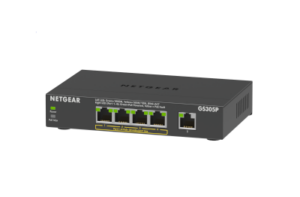
$71.99*
Specs:
- Type: Unmanaged
- Total bandwidth: 10Gbps
- Standard ports: 1x Gigabit Ethernet
- PoE+ ports: 4x Gigabit Ethernet
- PoE+ Power budget: 63W total
*Amazon.com price (as of 10/16/23 12:46 MST). Read full disclaimer.
Ethernet cables are typically associated with wired networking, but you can use them to deliver power too. For example, you can install security cameras in locations that lack electrical lines and outlets. Connect an Ethernet cable and the cameras can receive both data and power.
NETGEAR’s GS305P (version 2) provides power up to 30 watts per port, but your maximum total output can be only 63 watts. The “plus” version is $20 more and includes software that allows you to manage the device. If you need more ports and power, the GS316PP has 16 ports and a 183-watt power budget, starting at $399.99. Ouch.
 Pros:
Pros:
- Up to 30 watts per PoE port
- Plug-and-play design
 Cons:
Cons:
- Overall 63-watt power budget
What to look for in a network switch
Network switches are boring little devices. Their only function is to forward data, so you really only need to consider a few things if you want to expand your wired network. We list two factors you should consider when purchasing a network switch.
Number of ports
Gateways and routers usually have four Ethernet ports for wired networking, but sometimes that’s not enough—and that’s where a switch comes in. These little devices have at least five extra Ethernet ports for expanding your network, one of which you must reserve for the wired connection to another switch, a gateway, a router, or a fiber ONT.
Mainstream switches generally include up to 16 ports, while the more business-grade ones go even higher with their port counts. You’ll see some switches supporting Power over Ethernet, too, like the NETGEAR model we listed above.
Be sure to count all your wired connections and decide how many extra ports you actually need. It would suck to purchase a switch and get everything set up just to find out that you’re a port short.
Ethernet port speed
Make sure you get a network switch with Gigabit Ethernet ports, at the very least. These ports are rated for speeds of up to around 940Mbps, and they’re backward compatible with older Ethernet standards. Don’t get a switch with Fast Ethernet ports, which are rated for up to a slower 94Mbps.
You should consider network switches with Multi-Gig Ethernet ports. They’re more expensive, but they deliver the real-world wired speeds you need if you have an internet plan that’s 1,000Mbps or faster.
Want a faster plan to match your fast network switch?
Enter your zip code below to see which providers are available in your area.
Our verdict
If you’re in need of more Ethernet ports, go for the Linksys SE3008 network switch. Its simple plug-and-play setup, eight gigabit Ethernet ports, and automatic QoS traffic prioritization make it the easiest way to expand your home network.
FAQ about network switches
What is a network switch?
Do network switches reduce your network speed?
Does an network switch replace my router?
Switch vs. hub: What’s the difference?
Managed vs. unmanaged: What’s the difference?
Half-duplex vs. Full-duplex: What's the difference?
Disclaimer
*Amazon.com Prices as of 10/16/23 12:46 MST. Product prices and availability are accurate as of the date/time indicated and are subject to change. Any price and availability information displayed on Amazon.com at the time of purchase will apply to the purchase of this product. HighSpeedInternet.com utilizes paid Amazon links.
CERTAIN CONTENT THAT APPEARS ON THIS SITE COMES FROM AMAZON. THIS CONTENT IS PROVIDED ‘AS IS’ AND IS SUBJECT TO CHANGE OR REMOVAL AT ANY TIME.
Author - Kevin Parrish
Kevin Parrish has more than a decade of experience working as a writer, editor, and product tester. He began writing about computer hardware and soon branched out to other devices and services such as networking equipment, phones and tablets, game consoles, and other internet-connected devices. His work has appeared in Tom’s Hardware, Tom's Guide, Maximum PC, Digital Trends, Android Authority, How-To Geek, Lifewire, and others. At HighSpeedInternet.com, he focuses on network equipment testing and review.
Editor - Cara Haynes
Cara Haynes has been editing and writing in the digital space for seven years, and she's edited all things internet for HighSpeedInternet.com for five years. She graduated with a BA in English and a minor in editing from Brigham Young University. When she's not editing, she makes tech accessible through her freelance writing for brands like Pluralsight. She believes no one should feel lost in internet land and that a good internet connection significantly extends your life span.


